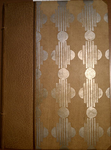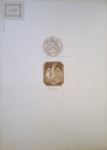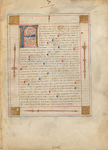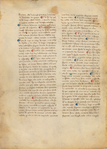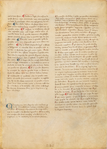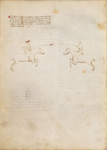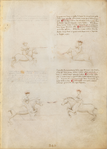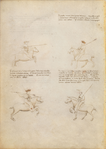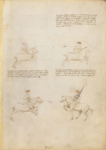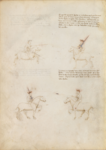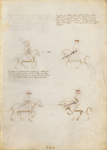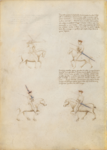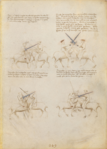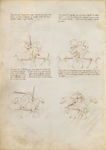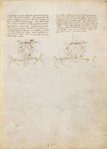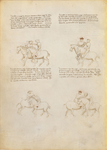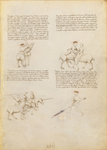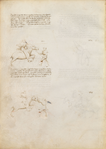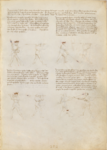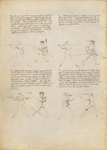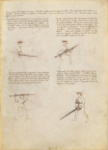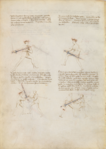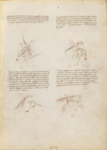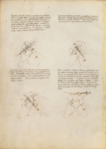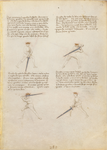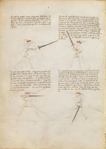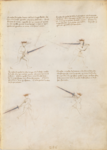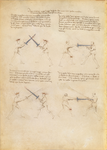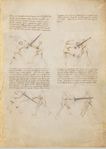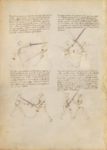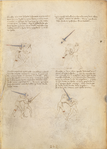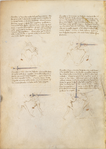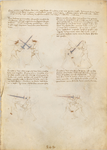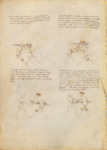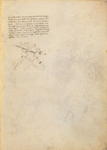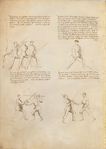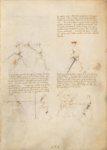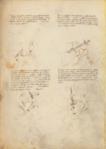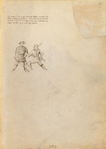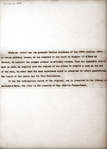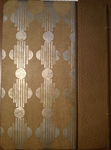|
|
You are not currently logged in. Are you accessing the unsecure (http) portal? Click here to switch to the secure portal. |
Difference between revisions of "Trattato della scherma (MS M.383)"
| Line 8: | Line 8: | ||
| caption = Title page, fol. 1r | | caption = Title page, fol. 1r | ||
<!----------General----------> | <!----------General----------> | ||
| − | | Index number = | + | | Index number = [[WI::—]] |
| + | | Wierschin's catalog=[[WC::—]] | ||
| Hils' catalog = [[HK::—]] | | Hils' catalog = [[HK::—]] | ||
| Beck catalog = [[BC::—]] | | Beck catalog = [[BC::—]] | ||
Revision as of 23:19, 2 March 2014
| Il Fior di Battaglia | |||||
|---|---|---|---|---|---|
| B1.370.A MS M.0383, Morgan Library & Museum New York City, New York | |||||
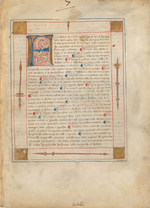 Title page, fol. 1r | |||||
| |||||
| |||||
| Type | |||||
| Date | before 1404 (?) | ||||
| Place of origin | Milan, Italy | ||||
| Language(s) | Middle Italian | ||||
| Author(s) | Fiore de'i Liberi | ||||
| Scribe(s) | Unknown | ||||
| Illustrator(s) | Unknown | ||||
| Material | Vellum, in a modern binding | ||||
| Size | 20 folia | ||||
| Format | Double-sided; four illustrations per page, with text above each | ||||
| Script | Bastarda | ||||
| External data | Museum data sheet | ||||
| Treatise scans | Digital scans | ||||
Fior di Battaglia ("The Flower of Battle", B1.370.A MS Morgan 0383) is an Italian fencing manual authored by Fiore de'i Liberi, probably created some time before 1404. The original currently rests in the holdings of the Morgan Library & Museum in New York City, New York. The manuscript is written on vellum in a modern biding in a very neat bastarda script; the illustrations are inked sketches with gold leafing on the crowns and garters and silver enamel on the metalic elements of the weapons (this has corroded to a glossy black finish). The treatise itself is the briefest known version of Fiore's work, containing only 19 folios; it has a preface in Italian and one to four illustrated figures per page in the main body. The figures are accompanied by text that is generally identical to that of the MS Ludwig XV 13 (excepting differences in spelling), but at times includes additional explanation. The MS M.383 was almost certainly longer when it was first written; its text makes reference to sections on poleaxe, dagger, and grappling which are not present in the book's current state. It also refers to a certain play of the sword in one hand which is likewise missing from that section. This manuscript is typically referred to as the Pierpont Morgan or simply the Morgan.[1]
Provenance
The known provenance of the MS M.383 is:[2]
- Probably written between some time before 1404.
- before 1780 – it occupied ff 241-259 of a larger collective binding titled, Arte di armeggiare a piedi ed acavallo (codex Soranzo MCCLXI) in the Biblioteca Soranzo in Venice (Library of Jacopo Soranzo, Venetian senator, 18th century). The other contents of this codex are unknown.
- 1780-1836 – the collection of the Venetian former Jesuit Matteo Luigi Canonici (1727-c.1806) (sold London, Sotheby's, June 15, 1836, no. 40).
- 1836-1903 – owned by Rev. Walter Sneyd of Bagington Rectory, Coventry (sold London, Sotheby's, Dec. 19, 1903, no. 720).
- 1903-1909 – owned by Tammaro de Marinis (catalog 8, 1908, plate 9).
- 1909-1913 – owned by John Pierpont Morgan.
- 1913-1924 – owned by John Pierpont Morgan, Jr. (donated 1924).
- 1924-present – held by the Morgan Library & Museum.
Contents
| Folio | Section | |||
|---|---|---|---|---|
Front matter
| ||||
| 1r - 2r | Preface by Fiore de'i Liberi | |||
| 2v - 8r | Mounted fencing by Fiore de'i Liberi | |||
| 8r - 8v | Spear vs. cavalry by Fiore de'i Liberi | |||
| 9r - 9v | Spear by Fiore de'i Liberi | |||
| 10r - 11v | Armored fencing by Fiore de'i Liberi | |||
| 12r - 16v | Longsword in two hands by Fiore de'i Liberi | |||
| 17r, 18r - 18v | Sword vs. dagger by Fiore de'i Liberi | |||
| 17v, 19r | Longsword in one hand by Fiore de'i Liberi | |||
| 18r | Longsword vs. spear by Fiore de'i Liberi | |||
| 18r | Spear and dagger vs. spear by Fiore de'i Liberi | |||
| 19v - 20v | Blank | |||
Rear matter
|
Gallery
Images hosted by the Princeton Index of Christian Art.
Additional Resources
- dei Liberi, Fiore; Leoni, Tommaso. Fiore de’ Liberi’s Fior di Battaglia. 1st ed. Lulu.com, 2009. 2nd ed. Wheaton, IL: Freelance Academy Press, 2012.
- dei Liberi, Fiore; Rubboli, Marco; Cesari, Luca (in Italian). Flos Duellatorum. Manuale di Arte del Combattimento del XV secolo. Rome: Il Cerchio Iniziative Editoriali, 2002. ISBN 88-8474-023-1.
- Malipiero, Massimo (in Italian). Il Fior di battaglia di Fiore dei Liberi da Cividale: Il Codice Ludwing XV 13 del J. Paul Getty Museum. Udine: Ribis, 2006. ISBN 88-7445-035-4.
References
- ↑ The description in this section is derived from an examination of the manuscript by Michael Chidester; the presumed date is based on the fact that it seems to be older than the Pisani Dossi version, which is dated to 1410.
- ↑ See "Curatorial description". CORSAIR Collection Catalog. Morgan Library & Museum. Retrieved 12 November 2012.

